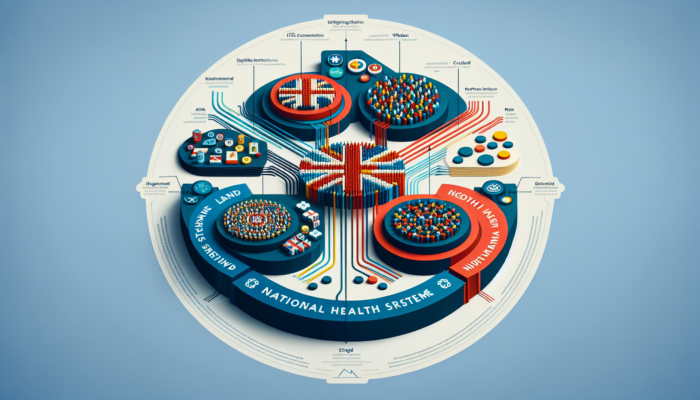Unlocking the Essential Elements of Speech Clarity
Defining the Key Aspects of Speech Clarity
Speech clarity is a crucial component of effective communication, highlighting the distinctness and intelligibility of spoken language. It transcends merely hearing sounds; it involves comprehending the message being conveyed. Factors such as articulation, appropriate intonation, and a quiet environment can greatly enhance the clarity of speech. For those experiencing hearing impairments, the capacity to interpret these sounds can significantly impact their everyday interactions and overall quality of life. Striving for optimal speech clarity facilitates smoother dialogues, enriching both personal relationships and professional engagements, and fostering a more connected existence.
The Critical Role of Speech Clarity in Daily Life
The significance of clear speech is paramount across various areas of life, influencing everything from personal relationships to workplace dynamics. In social settings, effective communication nurtures connections, diminishes misunderstandings, and builds trust among individuals. For professionals, clarity in speech is vital for delivering impactful presentations, engaging in successful negotiations, and fostering teamwork, ultimately enhancing career trajectories. Moreover, articulate speech boosts an individual’s confidence, making them feel more capable in diverse social contexts. The ability to communicate clearly not only allows for better emotional expression but also contributes to improved mental well-being, highlighting the far-reaching benefits of speech clarity.
Identifying and Overcoming Challenges to Speech Clarity
Several challenges can obstruct speech clarity, including background noise, hearing loss, and various speech disorders. In lively settings, such as restaurants or busy streets, the overwhelming sounds can mask essential conversational elements, making it difficult to follow spoken language. With millions affected by hearing loss worldwide, individuals often encounter muffled sounds and distorted speech, complicating communication efforts. Additionally, speech disorders such as stuttering or dysarthria can further diminish clarity, leading to frustration for both the speaker and the listener. Recognizing these obstacles is the first step towards implementing effective solutions, such as utilizing hearing aids, to enhance communication.
Proven Techniques to Enhance Speech Clarity

Improving speech clarity can be achieved through a variety of techniques, including articulation exercises, breathing methods, and structured speech therapy. Articulation exercises specifically target the precise formation of sounds, significantly boosting intelligibility. Breathing techniques are essential for regulating the flow of speech, enabling individuals to articulate their thoughts with greater clarity and confidence. Additionally, professional speech therapy offers tailored guidance and exercises designed to address each individual’s unique challenges, empowering them to overcome obstacles. When combined with modern technology such as hearing aids, these methods can substantially elevate communication effectiveness and clarity.
The Transformative Impact of Technology on Speech Clarity
Technological advancements have dramatically changed how we approach and improve speech clarity. Cutting-edge hearing aids now incorporate sophisticated functionalities that enhance sound quality, ensuring that conversations remain clear even in distracting environments. Features such as speech-to-text software and noise-cancellation technologies enable users to engage fully in conversations, effectively bridging the communication gap caused by hearing impairments or environmental noise challenges. With these innovations, individuals can enjoy a richer auditory experience, enhancing their ability to connect with others and participate meaningfully in both social and professional contexts.
Comprehending the Mechanism Behind Hearing Aids
Understanding the Core Functionality of Hearing Aids

Hearing aids are vital instruments for individuals facing hearing loss, as they amplify sound to facilitate easier comprehension of auditory information. Their core functionality involves capturing sound through built-in microphones, converting it into digital signals, and amplifying these signals for delivery to the ear. This amplification process enables users to discern sounds that may have previously been inaudible, fostering a clearer understanding of speech and enriching their overall auditory environment. The effectiveness of hearing aids can vary based on personal needs and the degree of hearing loss experienced, yet they remain essential tools for enhancing quality of life.
Diverse Types of Hearing Aids to Meet Varied Needs
A wide range of hearing aid models is available, each designed with unique features to cater to different user preferences and requirements. Behind-the-ear (BTE) models are widely favored for their user-friendly design and versatility. In-the-ear (ITE) aids are custom-fitted, offering a more discreet option, while completely-in-canal (CIC) hearing aids, although less visible, provide a more natural auditory experience. Each type presents its own set of advantages and disadvantages, allowing users to select based on comfort, visibility, and amplification requirements. Understanding these options is crucial for individuals aiming to enhance their speech clarity effectively and comfortably.
The Role of Technology in Modern Hearing Aids
Modern hearing aids leverage digital signal processing technology to significantly enhance sound quality and speech clarity. This advanced technology allows for precise tuning based on each user’s unique hearing profile, optimizing the amplification of speech frequencies while minimizing background noise. Many contemporary devices are equipped with advanced features such as feedback suppression, which eliminates annoying whistling sounds, and automatic adjustments that respond to varying environmental conditions. As hearing aid technology continues to develop, users benefit from ongoing enhancements that improve their auditory experiences, making communication more effective and enjoyable.
Maximizing Speech Clarity Through Hearing Aids
Exploring the Benefits of Noise Reduction Features
Noise reduction is a critical feature in modern hearing aids, specifically designed to filter out unwanted background noise while amplifying speech clarity. Utilizing advanced algorithms, these devices can differentiate between speech and ambient sounds, enabling users to concentrate on conversations without distractions. This capability is particularly advantageous in noisy environments, such as bustling cafes or crowded workplaces, where background chatter can obscure important verbal nuances. The ability to prioritize essential sounds paves the way for more meaningful and engaging interactions, empowering users to confidently engage in social situations.
Enhancing Conversations with Directional Microphones
Directional microphones represent another innovative feature that greatly enhances speech clarity in hearing aids. These microphones are engineered to focus on sounds originating from specific directions, typically from the front, allowing users to concentrate on conversations even in active settings. By diminishing sounds from other directions, users can effectively isolate dialogue, making it easier to comprehend what is being said without undue effort. This technology significantly enhances the overall user experience, particularly in social gatherings or meetings, where multiple discussions may occur simultaneously. For individuals striving to improve their communication skills, the introduction of directional microphones is truly transformative.
Utilizing Frequency Compression for Better Understanding
Frequency compression technology is essential for enhancing speech comprehension, particularly for individuals experiencing high-frequency hearing loss. It operates by compressing high-frequency sounds into lower frequencies that the user can hear more effectively. This modification preserves crucial speech cues, such as consonants, which are vital for understanding language. By converting sound into a more accessible range, frequency compression empowers individuals to engage more fully in conversations and interactions, thereby improving their overall communication abilities. This technology exemplifies how hearing aids can be precisely tailored to accommodate specific auditory needs.
The Multifaceted Benefits of Improved Speech Clarity
Elevating Social Interactions Through Clear Communication
Enhanced speech clarity can dramatically transform social interactions, enabling individuals to communicate more effectively and with greater confidence. Clearer speech minimizes the risk of misunderstandings and encourages authentic conversations, fostering deeper connections among friends, family members, and colleagues. In a variety of social settings, from casual outings to formal gatherings, the ability to articulate thoughts and respond clearly contributes to more enjoyable and fulfilling interactions. As relationships thrive through improved communication, individuals experience a heightened sense of belonging and emotional well-being, underscoring the profound impact of how hearing aids enhance speech clarity.
Boosting Professional Success with Improved Speech Clarity
In the workplace, enhanced speech clarity can lead to increased productivity and self-assurance. Clear communication is paramount for effective collaboration, impactful presentations, and successful negotiations, where misunderstandings can result in costly mistakes. The ability to express ideas and engage in discussions with clarity not only improves job performance but also opens the door to career advancement opportunities. Employers also benefit; teams comprised of members who communicate effectively tend to exhibit greater cohesion and innovation. Thus, investing in technologies that enhance speech clarity, such as hearing aids, is a wise decision for both individuals and organizations seeking success.
Fostering Emotional Well-being Through Effective Communication
The connection between communication and emotional well-being is undeniable. When individuals can express themselves clearly and understand others without barriers, it fosters a sense of empowerment and alleviates feelings of isolation. Improved speech clarity through hearing aids minimizes frustration in social situations, allowing users to engage more comfortably and freely. This enhanced communication capability supports positive mental health, nurturing connections that are essential for emotional support and resilience. Ultimately, the advantages of improved speech clarity extend far beyond practical communication, significantly enriching the emotional lives of individuals.
Navigating the Adjustment Process with Hearing Aids
Embracing the Initial Adaptation Period
Adapting to hearing aids represents a significant transition that necessitates patience and time. Many users encounter an initial adaptation period during which they must acclimate to the novel sounds and sensations provided by their hearing aids. It is not uncommon to feel overwhelmed by the influx of auditory information, ranging from subtle environmental sounds to the full spectrum of conversations. This adjustment phase can span from a few days to several weeks, depending on personal experiences and the severity of hearing loss. Embracing this period with an open mind is essential for maximizing the benefits of enhanced speech clarity.
Customization and Fine-tuning by Professionals
Professional adjustments and fine-tuning are critical steps in optimizing hearing aids to meet individual needs. Audiologists play an instrumental role in this process, customizing settings based on the user’s specific hearing profile and lifestyle. Fine-tuning may involve adjusting sound levels, frequency responses, and noise reduction features to ensure optimal clarity in various environments. This customization is vital for maximizing the effectiveness of hearing aids, as it enables users to experience tailored solutions that address their unique auditory challenges. Regular follow-ups with audiologists can further enhance hearing aid performance over time, ensuring sustained satisfaction.
Ensuring Ongoing Support and Maintenance for Hearing Aids
Regular check-ups and maintenance are essential for ensuring that hearing aids continue to operate effectively. Users should schedule periodic appointments with audiologists to evaluate the functionality of their devices and make any necessary adjustments. Maintenance may involve cleaning, battery replacements, and software updates to enhance performance and longevity. By prioritizing these ongoing support measures, users can enjoy consistent speech clarity and an improved auditory experience, reducing the likelihood of frustration or communication barriers as time goes on.
Strategies for Adapting to Different Environments
Learning to effectively utilize hearing aids across various settings is crucial for maximizing their benefits. Users should develop environmental adaptation strategies, such as selecting optimal seating arrangements in noisy restaurants or utilizing assistive listening devices in larger venues. Familiarizing oneself with diverse listening environments can bolster confidence in the ability to engage in conversations. Additionally, strategies like focusing on the speaker’s lips while listening can further enhance sound clarity in challenging situations. Mastering these techniques can significantly improve overall satisfaction with hearing aids and the communication experiences they facilitate.
Addressing Psychological Adjustments and Counseling Needs
The psychological dimensions of hearing loss can pose challenges for many users, making emotional support and counseling integral to the adjustment process. Coping with hearing loss may evoke feelings of frustration, isolation, and anxiety, which can adversely affect an individual’s mental well-being. Seeking guidance from professionals specializing in auditory-related psychological issues can provide valuable coping strategies and support frameworks. Counseling can empower users to view their hearing aids as tools for connection rather than limitations. This holistic approach to adjustment not only enhances speech clarity but also fosters resilience and emotional health.
Exploring Technological Innovations in Hearing Aids
The Revolutionary Integration of Artificial Intelligence
The incorporation of artificial intelligence (AI) into hearing aids represents a groundbreaking advancement in enhancing speech clarity. AI technology enables hearing aids to analyze sound environments in real-time, automatically adjusting settings to optimize clarity based on surrounding noise levels and types of sounds present. This capability significantly enhances the user experience, making it easier to navigate different auditory environments, from quiet meetings to vibrant social gatherings. As AI technology continues to advance, the potential for further innovations in hearing aids promises even greater improvements in communication effectiveness and user satisfaction.
Wireless Connectivity for Seamless Communication
Wireless connectivity in hearing aids facilitates seamless integration with smartphones and other devices, enhancing speech clarity through direct streaming capabilities. This feature enables clear communication during phone calls, video conferences, and audio streaming, providing users with a more immersive auditory experience. By connecting to various devices, hearing aids can automatically adjust settings based on context, further improving clarity in conversations. This level of connectivity empowers users to engage with modern communication methods without the barriers that traditional hearing aids may impose, significantly enhancing their social interactions and daily experiences.
Future Innovations in Hearing Aid Technology
Ongoing research in hearing aid technology holds promise for further innovations aimed at enhancing speech clarity. Emerging trends include the development of smaller, more discreet devices equipped with advanced functionalities, such as improved noise-cancellation and enhanced sound processing algorithms. Innovations in battery technology may also lead to longer-lasting devices with faster charging capabilities. As these advancements continue to materialize, they will further empower individuals with hearing loss, enabling them to enjoy clearer communication and richer auditory experiences, thus transforming their interactions with the world.
Guidelines for Selecting the Ideal Hearing Aid
Assessing Personal Needs for Optimal Hearing Aid Selection
Choosing the right hearing aid begins with a comprehensive assessment of individual needs. Audiologists evaluate the severity of hearing loss, lifestyle preferences, and personal goals to recommend the most suitable hearing aid model. This personalized approach ensures that users receive devices tailored to their unique auditory requirements, enhancing the potential for improved speech clarity. Considerations such as budget, desired features, and cosmetic preferences also play a significant role in the decision-making process. By understanding their specific needs, users can make informed choices that lead to more effective communication solutions and overall satisfaction.
The Importance of Trial Periods and Demonstrations
Trial periods and demonstrations are vital components of the process of finding the right hearing aid. Many audiologists provide opportunities for users to trial different models, allowing them to experience firsthand how each device enhances speech clarity in real-world scenarios. This hands-on approach helps users assess their comfort levels, evaluate sound quality, and determine which features best align with their lifestyles. Engaging in trial periods empowers individuals to make confident decisions, ensuring that they select hearing aids that genuinely meet their needs and preferences for optimal communication.
Understanding Cost and Insurance Factors in Hearing Aid Selection
Gaining insight into the costs associated with hearing aids is essential for prospective users. Prices can vary widely based on the features, technology, and brand of the device. Additionally, insurance coverage for hearing aids can differ significantly, with some plans offering partial reimbursement while others may not cover expenses at all. Individuals should explore their insurance options and consider financial assistance programs when budgeting for hearing aids. By being well-informed about costs and insurance considerations, users can navigate the financial landscape more effectively, ensuring access to the best solutions for their hearing needs.
Frequently Asked Questions About Hearing Aids
What are the primary benefits of using hearing aids?
Hearing aids primarily enhance speech clarity, improve social interactions, boost confidence in professional settings, and contribute to overall emotional well-being. They make communication more accessible, significantly enriching the user’s quality of life and social engagement.
How do hearing aids improve speech clarity?
Hearing aids enhance speech clarity by amplifying sound, reducing background noise, and utilizing features such as directional microphones and frequency compression, allowing users to focus on conversations even in challenging auditory environments.
Do all hearing aids have the same features?
No, hearing aids vary significantly in features based on models and brands. Some may include advanced options like noise reduction, wireless connectivity, and artificial intelligence integration, while others may focus primarily on basic amplification functionalities.
How long does it take to adjust to wearing hearing aids?
The adjustment period varies depending on the individual but typically ranges from a few days to several weeks. Users may initially experience an overwhelming sensation as they acclimate to new sounds and auditory information.
Can hearing aids help with background noise?
Yes, many modern hearing aids incorporate noise reduction features that assist in filtering out background noise, allowing users to concentrate more effectively on speech and important sounds within their surroundings.
What should I consider when choosing a hearing aid?
Consider aspects such as the severity of hearing loss, lifestyle preferences, comfort, desired features, and budget. Consulting with an audiologist can provide valuable insights tailored to individual needs, ensuring the best choice for hearing aids.
Are hearing aids covered by insurance?
Coverage for hearing aids varies widely between insurance plans. Some may offer partial reimbursement, while others may not cover them at all. It is essential to check with your provider for specific coverage details.
What advancements are being made in hearing aid technology?
Recent advancements include the integration of artificial intelligence, improved noise cancellation, and enhanced wireless connectivity, all aimed at improving user experience and speech clarity in diverse environments.
How often should I have my hearing aids checked?
Regular check-ups are recommended every six months to maintain optimal functionality. This includes cleaning, maintenance checks, and potential adjustments to accommodate any changes in hearing needs.
Can I use my hearing aids while exercising?
Yes, many hearing aids are engineered to withstand sweat and moisture. However, it is advisable to consult with your audiologist regarding specific models that are best suited for active lifestyles and physical activities.
Explore our journey on X!
The post Hearing Aids Enhance Communication and Speech Clarity appeared first on The Microsuction Ear Wax Removal Network.




















